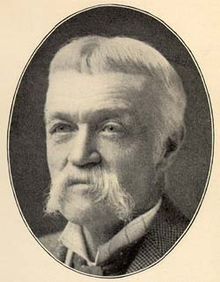Frank Furness
| Frank H. Furness | |
|---|---|
 |
|
| Born |
November 12, 1839 Philadelphia, Pennsylvania |
| Died | June 27, 1912 (aged 72) Upper Providence Township, Delaware County, Pennsylvania |
| Place of burial | Laurel Hill Cemetery Philadelphia, Pennsylvania |
| Allegiance | United States Union |
| Service/branch |
United States Army Union Army |
| Years of service | 1861-1864 |
| Rank | Captain |
| Unit | 6th Pennsylvania Cavalry |
| Battles/wars |
American Civil War Battle of Brandy Station Battle of Gettysburg Battle of Trevilian Station |
| Awards | Medal of Honor |
| Other work | Architect |
Frank Heyling Furness (November 12, 1839 - June 27, 1912) was an American architect of the Victorian era. He designed more than 600 buildings, most in the Philadelphia area, and is remembered for his eclectic, muscular, often idiosyncratically scaled buildings, and for his influence on the Chicago architect Louis Sullivan. Furness was also a Medal of Honor recipient for his bravery during the Civil War.
Toward the end of his life, his bold style fell out of fashion, and many of his significant works were demolished in the 20th century. Among his most important surviving buildings are the University of Pennsylvania Library (now the Fisher Fine Arts Library), the Pennsylvania Academy of the Fine Arts, and the First Unitarian Church of Philadelphia, all in Philadelphia, Pennsylvania.
Furness was born in Philadelphia on November 12, 1839. His father, William Henry Furness, was a prominent Unitarian minister and abolitionist, and his brother, Horace Howard Furness, became America's outstanding Shakespeare scholar. Frank, however, did not attend a university and apparently did not travel to Europe. He began his architectural training in the office of John Fraser, Philadelphia, in the 1850s. He attended the École des Beaux-Arts-inspired atelier of Richard Morris Hunt in New York from 1859 to 1861, and again in 1865, following his military service. Furness considered himself Hunt's apprentice and was influenced by Hunt's dynamic personality and accomplished, elegant buildings. He was also influenced by the architectural concepts of the French engineer Viollet-le-Duc and the British critic John Ruskin.
...
Wikipedia
